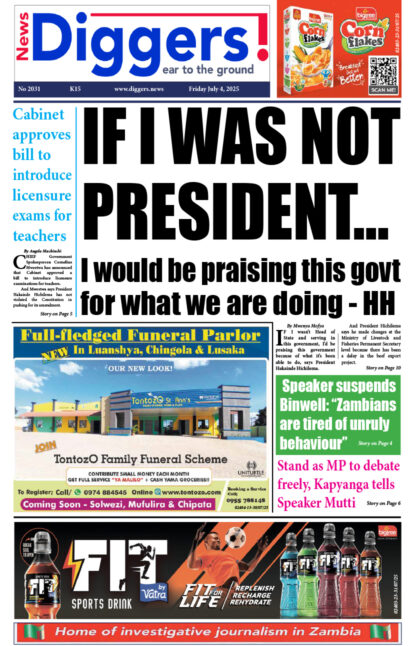Inflation is likely to shoot up in the short-term, but will remain range bound, says Bank of Zambia governor Dr Denny Kalyalya.
And Dr Kalyalya says local commercial banks are having challenges in meeting the minimum capital threshold requirement of K104 million as the uptake from local investors to invest is “not strong enough.”
Speaking during the BoZ MPR announcement in Lusaka, Dr Kalyalya said the annual rate of inflation will continue to increase over seven per cent in the short-term, but will remain range bound between 6-8 per cent.
The annual rate of inflation increased to 7.4 per cent in April, up from 7.1 per cent recorded in March, according to CSO data, making last month’s inflation the highest so far in over a year.
“Inflation outlook: what we are saying is that, in the second and third quarters, inflation is projected to rise above seven per cent. Currently, it is at 7.4 per cent, but after that, for the next six quarters, we expect that inflation will fall within that corridor (6-8 per cent),” Dr Kalyalya told journalists at the Bank’s headquarters, Wednesday.
He explained that the country’s annual rate of inflation still faces “upside risks” such as lower crop harvest and elevated fiscal deficits, among others.
“By upside risks, we mean that what are those risks which could push inflation high. One of them is; elevated fiscal deficits; lower crop production,” Dr Kalyalya added.
And when asked whether there were any dangers of any local commercial banks folding in view of the failure by some to meet the minimum capital requirement of K104 million, Dr Kalyalya acknowledged that there were some challenges in the sector.
The Bank of Zambia’s minimum primary capital requirement for local banks was increased to K104 million from K12 million back in 2012, but to-date, some commercial banks are falling short, potentially falling at risk to insolvency.
On November 28, 2016, the BoZ took possession of Intermarket Banking Corporation due to the bank’s insolvency and its inability to meet obligations as they fell due.
“Yes, there has been some challenges by some of the banks to meet that requirement. There is a time frame, which was agreed within which to do that. But it seems we don’t have many local takers; there are a number of banks, which are offering their shares to locals, but it
seems the uptake is not strong,” he explained.
“So, this is something, I think, you can help us to look for investors; there are banks who are willing to take on new shareholders.”
Bank of Zambia director bank supervision, Gladys Mposha, added that the central bank is continuing to monitor the financial market, and is contact with some banks failing to meet their requirements.
“We continue to monitor all the banks, and we also continue to engage all the banks, to ensure that they are complying with the requirements and operating within the rules. And should need be for them to bring in fresh capital, that is also made clear to them. We are keeping our eyes on the entire industry and ensuring that banks are complying with the requirements,” Mposha said.
Earlier, Dr Kalyalya announced that the BoZ maintained the same Monetary Policy Rate (MPR) and Statutory Reserve Ratio (SRR) of 9.75 per cent and 5 per cent, respectively, in a bid to induce lower interest rates and revive economic growth.
“We feel that rate of 9.75 per cent is appropriate. We see that there are still challenges in the credit market; credit extension to the private enterprises is a problem so we want that to pick up,” said Dr Kalyalya.



















